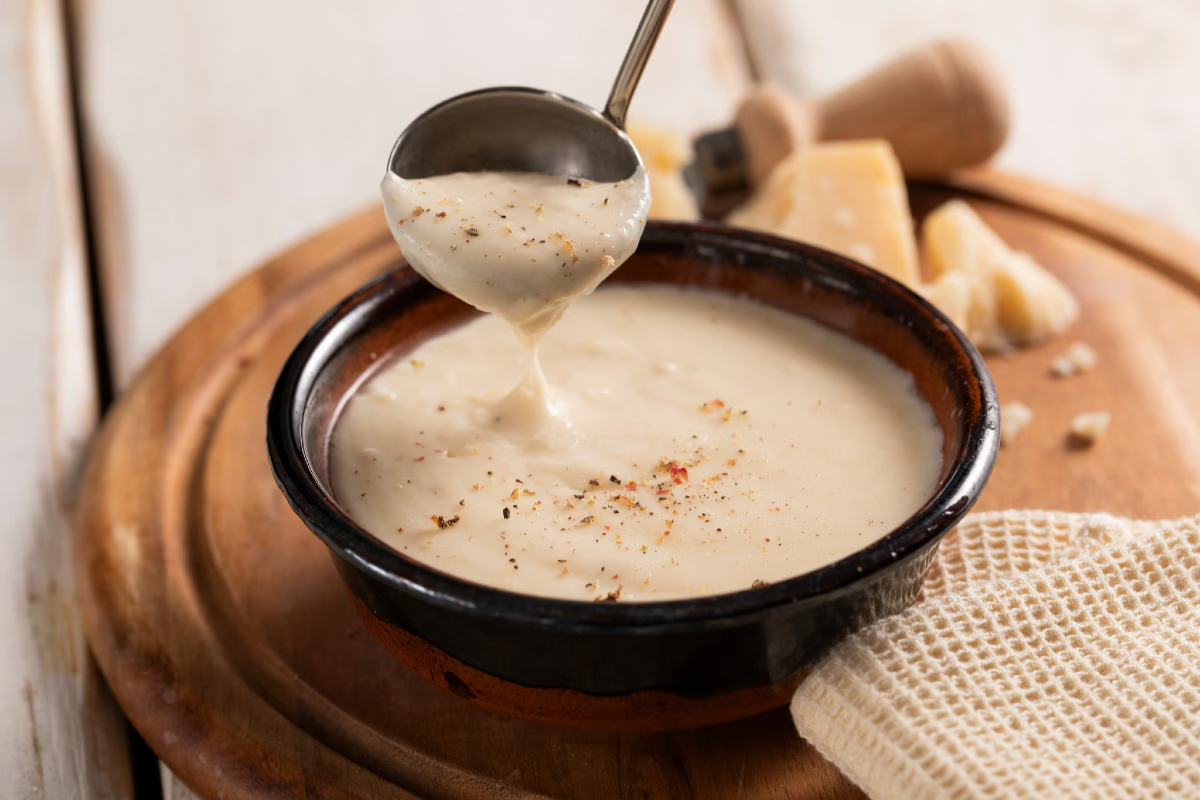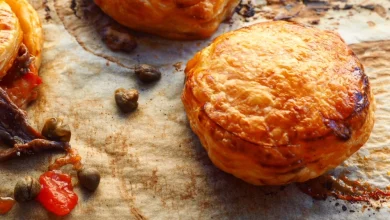Classic Neapolitan Sartù di Riso: Italian Rice Timbale with Meatballs and Mozzarella
Sartù di Riso: A Hearty Neapolitan Rice Timbale Recipe
Category: One-Dish Meal
Servings: 8
Sartù di Riso, a traditional Neapolitan rice timbale, is a quintessential Italian comfort dish that showcases the rich flavors of slow-cooked meats, savory sauces, and tender rice. This dish is packed with layers of succulent ingredients such as sausage, meatballs, mozzarella, peas, and a flavorful ragù. Though it requires time and patience, the end result is a mouthwatering creation that’s perfect for gatherings, special occasions, or a hearty family meal.
Ingredients
| Ingredient | Quantity |
|---|---|
| Carnaroli Rice | 500g |
| Frozen Peas | 200g |
| Eggs | 2 |
| Mozzarella | 150g |
| Fine Salt | to taste |
| Eggs | 125g |
| Pork Ribs | 320g |
| Beef Brisket (Biancostato) | 700g |
| Sausage | 340g |
| Golden Onions | 300g |
| Extra Virgin Olive Oil | 60g |
| Tomato Passata | 700g |
| Red Wine | 70g |
| Water | 300g |
| Ground Beef | 200g |
| Bread (for breadcrumbs) | 75g |
| Parmesan Reggiano DOP | 30g |
| Black Pepper | to taste |
| Parsley | 1 tsp |
| Peanut Oil (for frying) | as needed |
| Butter | as needed |
| Breadcrumbs | as needed |
Instructions
Step 1: Prepare the Ragù Napoletano
The first step in creating the Sartù di Riso is to prepare a traditional Neapolitan ragù, a slow-cooked meat sauce that is the foundation of this dish. Start by heating a large pot over medium heat, adding a generous amount of extra virgin olive oil. Once the oil is hot, finely chop the onions and add them to the pot. Let them sauté gently until they become soft and translucent, releasing their sweet aroma.
Add the cuts of meat (pork ribs, beef brisket, and sausage) to the pot. Sear the meat on all sides for a few minutes until it’s browned and sealed, which helps to lock in the flavors. Once the meat is browned, pour in the red wine to deglaze the pan, scraping up any browned bits from the bottom of the pot.
Allow the wine to evaporate completely before adding the tomato passata and water to the pot. Stir the ingredients together, making sure the meat is fully submerged in the liquid. Lower the heat to a simmer and let the ragù cook gently for at least 4 hours. During this time, check the pot occasionally, adding more water as needed to maintain a saucy consistency.
Once the ragù has cooked down and the meat is tender, taste and adjust the seasoning with salt and pepper. Remove the large pieces of meat from the pot, as these can be reserved for serving as a second course. You’ll only need the sausage for the Sartù di Riso. Set the ragù aside to cool.
Step 2: Prepare the Meatballs
While the ragù is simmering, prepare the meatballs. Start by soaking the bread in cold water. Once it’s soaked, squeeze out the excess water and crumble it with your hands or a fork. In a large mixing bowl, combine the ground beef with one lightly beaten egg, the squeezed bread, grated Parmesan cheese, chopped parsley, salt, and pepper. Mix everything together until well-combined.
Take small portions of the meat mixture and roll them into tiny balls, about 4 grams each. Continue until you’ve formed approximately 100 meatballs.
In a separate frying pan, heat a small amount of peanut oil over medium heat. When the oil is hot, add the meatballs in batches, ensuring they’re not crowded in the pan. Fry them until they’re golden brown and cooked through. Remove the meatballs from the pan and set them on a paper towel-lined plate to drain any excess oil.
Step 3: Prepare the Rice
Next, prepare the rice. Bring a pot of salted water to a boil and cook the Carnaroli rice until it is al dente, following the package instructions. Drain the rice and set it aside to cool for a few minutes.
In a separate bowl, whisk together the eggs, salt, pepper, and grated Parmesan cheese. Once the rice has cooled slightly, pour the egg mixture over the rice and stir well to combine, ensuring the rice is evenly coated with the egg and cheese.
Step 4: Assemble the Sartù di Riso
Now it’s time to assemble the Sartù di Riso. Grease a 20 cm diameter, 12 cm high ovenproof dish with butter. Then, coat the buttered dish with breadcrumbs to prevent the rice from sticking.
Begin by layering the base of the dish with a portion of the rice mixture, pressing it down gently to form an even layer. Next, add a layer of sliced sausages, followed by a layer of sliced hard-boiled eggs. On top of the eggs, add a layer of mozzarella slices, followed by a layer of peas and meatballs. Repeat these layers, ensuring that each component is evenly distributed throughout the dish.
Finish the assembly with a final layer of rice, pressing everything down firmly with a spoon to compact it. Sprinkle the top of the dish with breadcrumbs and dot it with small pieces of butter for extra richness.
Step 5: Bake the Sartù di Riso
Preheat your oven to 180°C (350°F) in static mode (do not use the fan setting). Place the assembled Sartù di Riso in the oven and bake it for 60 minutes. The dish should be golden brown on top and fully cooked through.
Once baked, allow the Sartù di Riso to cool for about 10 minutes before attempting to remove it from the pan. This rest period helps it set and makes it easier to slice. Use a sharp knife to carefully loosen the edges of the dish, then invert it onto a large serving platter.
Step 6: Serve and Enjoy
Serve the Sartù di Riso while it’s still warm or at room temperature. It’s a show-stopping dish perfect for festive occasions or a comforting family meal. The combination of tender rice, rich ragù, and savory fillings will surely leave everyone coming back for seconds.
Tips and Variations:
- Leftover Meat: If you have leftover meat from the ragù, serve it as a second course for a delicious two-part meal.
- Rice Options: While Carnaroli rice is traditional, you can also experiment with Arborio rice or Vialone Nano for different textures.
- Vegetarian Version: For a vegetarian twist, replace the meat with a mixture of sautéed vegetables like mushrooms, zucchini, and eggplant.
- Make Ahead: Sartù di Riso can be made a day ahead and stored in the refrigerator. Simply reheat it in the oven before serving.
Enjoy this authentic Italian masterpiece with your loved ones, and share the warmth and joy of Neapolitan cuisine.








